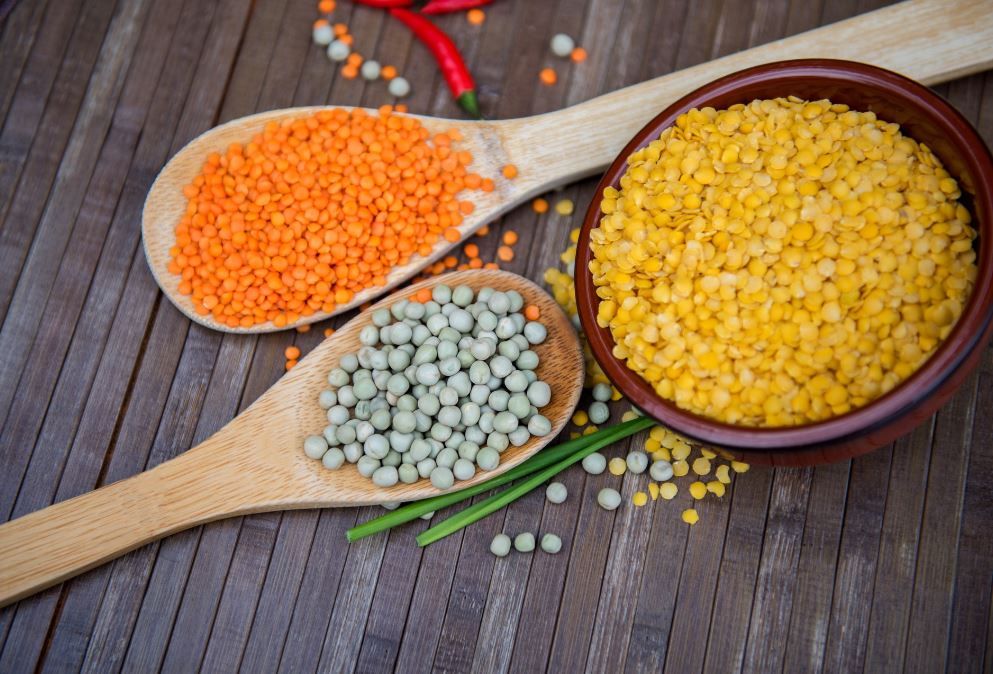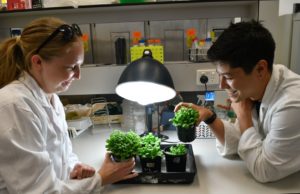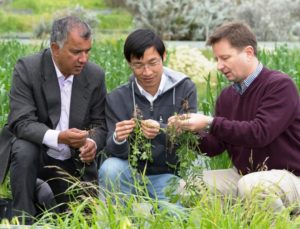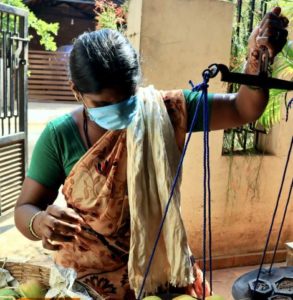
With millions facing hunger around the world, Flinders University researchers are looking into novel properties of leading edible plants which could enhance future food crop production.
The new studies, with Australian and international partners, separately examine how legumes use an alternative ‘respiration’ as a stress response – and how a popular pulse crop finds strength in a “ménage à trois” three-way relationship with soil and root systems.
The UN’s Food and Agricultural Organization’s forecasts for 2030 includes worsening food security and nutrition for people around the world with the pandemic, political conflict and economic downturns exacerbating supply chain issues caused by climate change.
The latest Flinders University investigations open promising new pathways to develop faster-growing crops with more resistance to stresses such as drought, heat and salinity at a time when climate variability and extremes are putting pressure on vital food production.

In the first study, published in Frontiers in Plant Science, Flinders University experts focused on the complex processes legumes go through to have a backup or alternative respiration. This can act in a similar way to an antioxidant, preventing damage during stress or difficult conditions, says first author Dr Crystal Sweetman.
“Alternative respiration is quite different between crops such as legumes and cereals, because different plants contain different versions of alternative respiration genes and proteins,” she says. “This means that some plants can fine tune their stress response more efficiently than others.

“There can also be variation within populations of the same species, making this an interesting candidate for breeding new varieties of crops with improved tolerance to heat, drought, salinity and other stresses. And that is our ultimate goal with this research.”
In another article, published in Plant and Soil, Flinders researchers focused on how legume plants enlist help from favourable micro-organisms in the soil to improve growth and stress tolerance. The latest study of the ‘tripartite’ symbiosis in chickpea plants follows long-running research into actinobacteria that increase rhizobial root N-fixing abilities in chickpea growth and grain yield.
Senior researcher Emeritus Professor Chris Franco says the research is vital to seek insights into better management of chickpea production when variable soil pH, nutrients and moisture and hotter weather are increasingly more common in Australia, the world’s second largest chickpea producing country behind India.

“Along with nitrogen-fixing rhizobia, legume roots can also be supported by common soil microbes or actinobacteria, which occur in different measures in soils and also within the plant,” Professor Franco says.
“In fact, our research confirms that this vital symbiosis between legume and rhizobium is actually a ménage à trois with these actinobacteria which paves the way for development of more effective inoculants to maximise growth,” he says.
“This is important to developing better soil and growing conditions for premium chickpea production in a very sustainable manner,” he says.
Legume Alternative Oxidase Isoforms Show Differential Sensitivity to Pyruvate Activation (2022) by C Sweetman, J Selinski, TK Miller, J Whelan and DA Day has been published in Frontiers in Plant Science DOI 10.3389/fpls.2021.813691
Also, ‘Revealing the underlying mechanisms mediated by endophytic actinobacteria to enhance the rhizobia – chickpea (Cicer arietinum L.) symbiosis’ (2022) by Ting Xu, QA Tuan Vo, Steve J Barnett, Ross A Ballard, Yonghua Zhu and Christopher MM Franco has been published in Plant and Soil (Springer Nature) DOI: 10.1007/s11104-022-05335-2

Meanwhile, another Flinders University study in Frontiers in Plant Science (February 2022) has evaluated phosphorus use efficiency in a wheat breeding variety – see ‘Higher Photochemical Quenching and Better Maintenance of Carbon Dioxide Fixation Are Key Traits for Phosphorus Use Efficiency in the Wheat Breeding Line, RAC875′ (2022) by Van Lam Nguyen, Lachlan Palmer and James Stangoulis DOI: 10.3389/fpls.2021.816211

